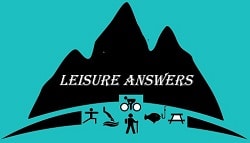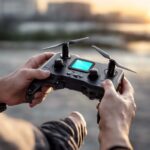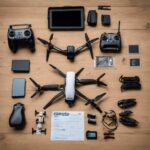Drones, also known as unmanned aerial vehicles (UAVs) have become increasingly popular recently. These flying machines have cameras and other sensors to capture stunning aerial footage and data.
Drones 101
Drones are in essence, flying robots that are controlled remotely or autonomously. They come in various shapes and sizes, from small quadcopters to sizeable fixed wing aircraft. Many drones have cameras and sensors for data collection on temperature, humidity, and air quality.
The use of drones has expanded beyond just hobbyists and enthusiasts. Flying a drone is a fantastic leisure hobby and drones are now used in various industries, including agriculture, construction, and search and rescue. Drones can survey crops, inspect buildings and infrastructure, and locate missing persons, and as the technology continues to evolve, the possibilities for drone use are endless.
Types of Drones
Drones come in various shapes, sizes, and types; each has unique features and capabilities. The three popular types of drones include quadcopters, military, and fixed wing drones.
Quadcopters
Quadcopters, or quadrotors, are the most common type of drone. They have four rotors that allow them to hover in place, move up and down, and turn in any direction. Quadcopters are typically used for aerial photography, videography, and recreational purposes. They are easy to fly and can be guided using a remote control or a smartphone app.
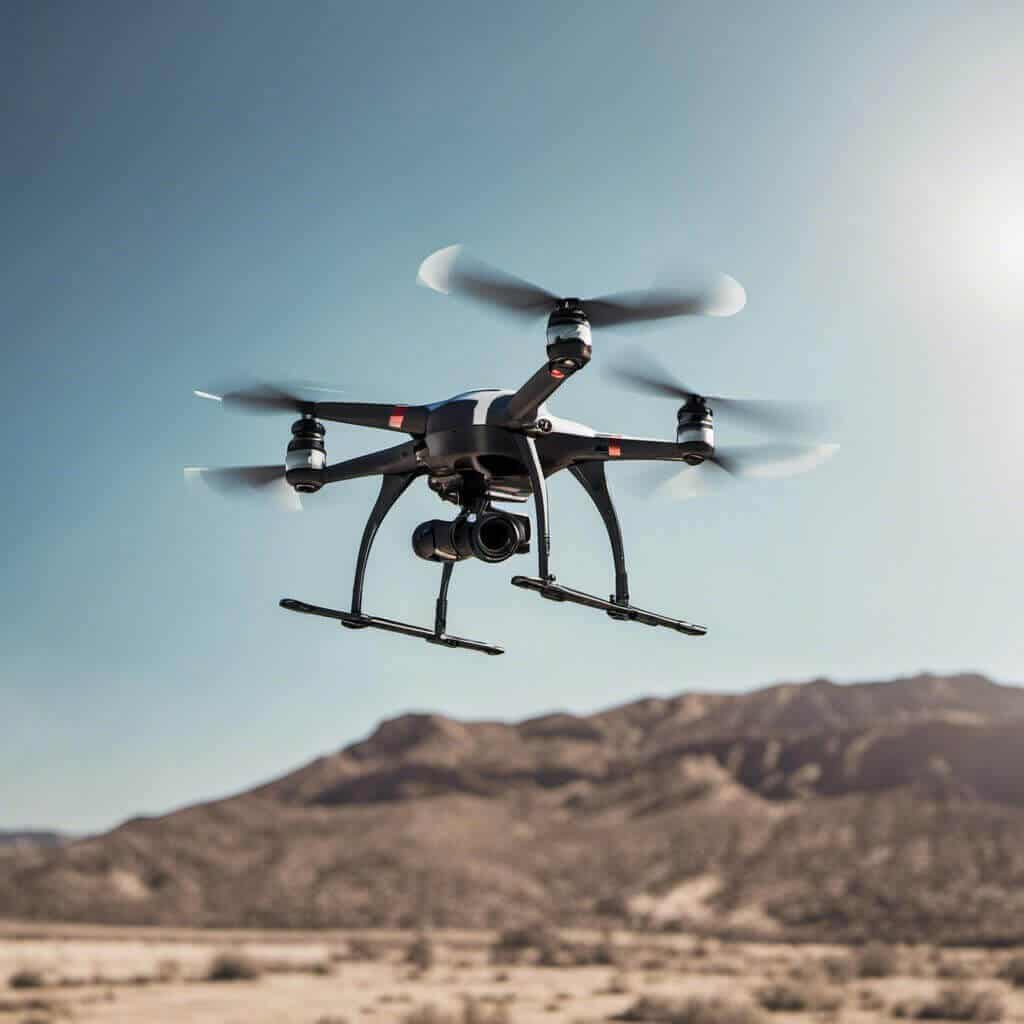
Military Drones
Military drones, also called unmanned aerial vehicles (UAVs), are used by the military for various purposes, such as surveillance, reconnaissance, and target acquisition. They come in different sizes and shapes, ranging from small handheld drones to large high altitude, long endurance (HALE) drones. Military drones have advanced sensors and cameras that allow them to gather intelligence and perform missions without risking human lives.
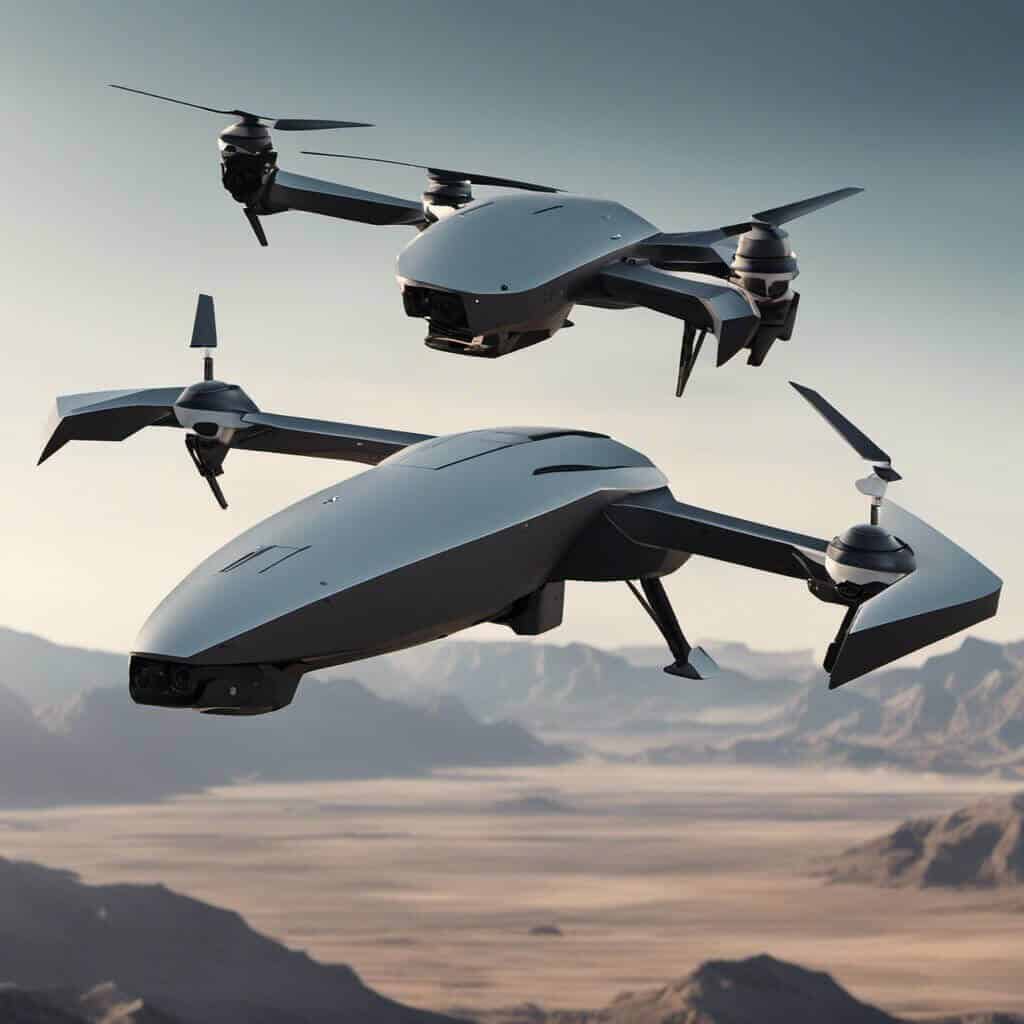
Fixed Wing Drones
Fixed wing drones are similar to traditional airplanes in design and flight characteristics. They have wings that provide lift and propulsion, allowing them to fly longer distances and at higher speeds than quadcopters. Fixed wing drones are mainly used for mapping, surveying, and agricultural purposes, though they are also used in the military for reconnaissance and surveillance missions.
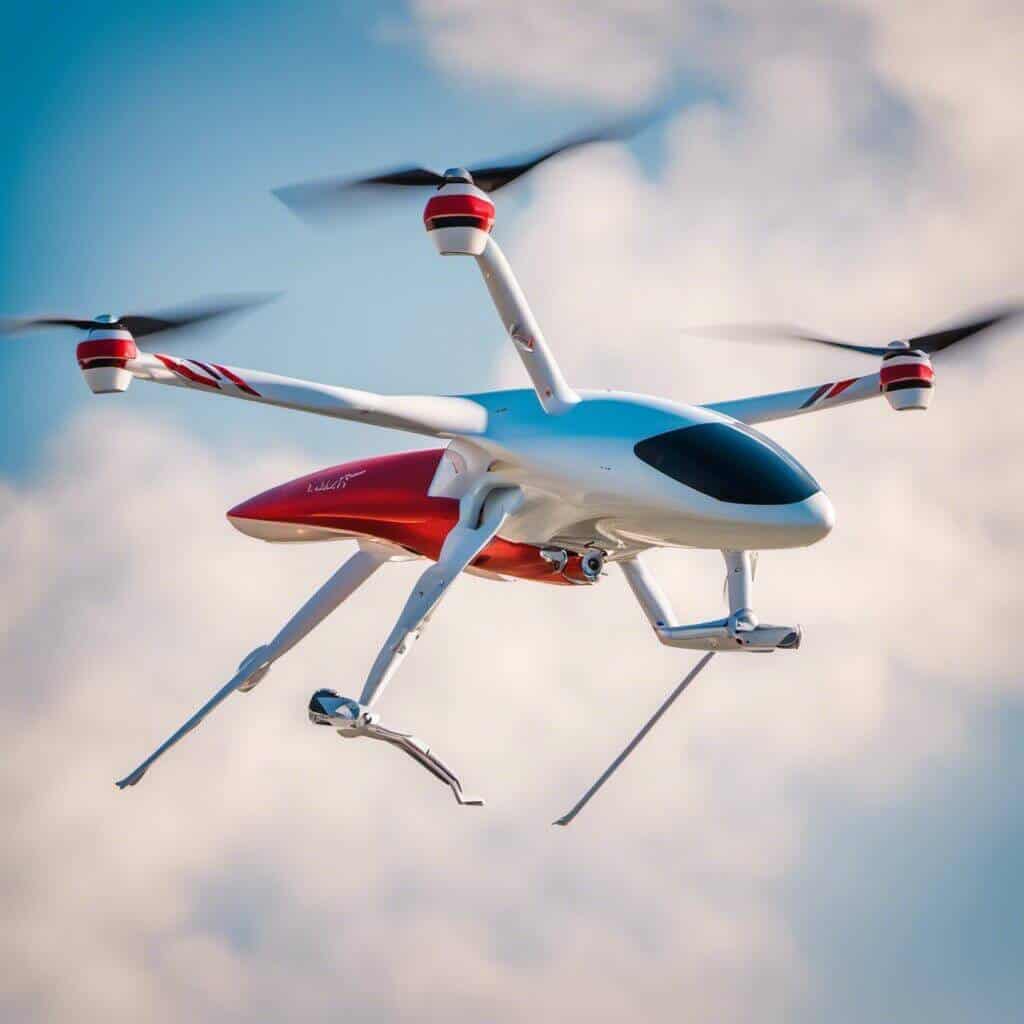
Key Features And Components Of Drones
Drones offer a range of features and components that make them a valuable tool for various industries, including photography, agriculture, and search and rescue operations, such as:
Sensors and Cameras
One of the most critical components of a drone is its sensors and cameras. These devices allow the drone to gather data and capture images and video. Some of the most common sensors used in drones include:
- GPS: This allows the drone to navigate and maintain its position in the air.
- Gyroscope: This helps the drone maintain stability and balance in flight.
- IMU: The Inertial Measurement Unit (IMU) measures the drone’s acceleration and rotation rates.
- Lidar: This is a laser-based sensor that can be used for mapping and terrain analysis.
Cameras are also an essential part of a drone’s sensor suite. They come in various types and resolutions, from low cost consumer models to high end professional systems. The most common camera types used in drones include:
- RGB cameras: These capture standard colour images and video.
- Thermal cameras: To detect heat signatures which can be used for search and rescue operations.
- Multispectral cameras: These capture images in multiple wavelength bands, allowing for detailed analysis of plant health and other environmental factors.
Flight Controllers and IMU
The flight controller, the drone’s brain, is responsible for processing sensor data and controlling the aircraft’s movement. It uses the IMU, Inertial Measurement Unit, to measure the drone’s acceleration and rotation rates and adjusts the motors accordingly to keep the drone stable in flight. Head to our guide The Drone Remote Controller for a more in depth discussion.
Gimbals and Laser Range Finders
Gimbals are mechanical devices that stabilize the camera in flight, reducing the effects of vibration and movement. They are often used with laser range finders, which measure distances to objects on the ground.
Drone Technology and Software
Drone technology is evolving, developing advanced software and hardware systems, including GPS global positioning systems.
GPS and GLONASS
GPS, global positioning systems based in the United States, and GLONASS, GLObalnaya NAvigatsionnaya Sputnikovaya Sistema based in Russia, are satellite based navigation systems used in drones to determine their location accurately. These systems provide real time location data, which drones utilize to navigate and fly autonomously. GPS and GLONASS work together to provide precise data location, even in challenging environments such as urban areas or dense forests.
Computer Vision and Collision Avoidance Systems
Computer vision and collision avoidance systems are essential safety features in drones, so using sensors, cameras, and software algorithms to detect obstacles and avoid collisions is vital. They enable drones to fly autonomously and safely, even in complex environments.
Computer vision systems use cameras and sensors to detect objects in the drone’s path. They analyze the data and send signals to the drone’s flight controller, which adjusts its flight path to avoid obstacles.
Collision avoidance systems use sensors and software algorithms to detect obstacles and calculate the drone’s distance from them. They alert the drone’s pilot if the drone is too close to an obstacle, allowing them to take evasive action.
Commercial and Recreational Uses
Drones have become increasingly popular in recent years and have many commercial and recreational uses. Here are some of the most common uses of drones:
Photography and Filmmaking
Drones for aerial photography and filmmaking are prevalent as they offer a unique perspective that is difficult to achieve with traditional cameras. Drones can capture stunning aerial shots for movies, TV shows, and commercials and are helpful for aerial photography of real estate, weddings, and other events.
Agriculture and Infrastructure Inspection
Agricultural drones are becoming increasingly popular for their ability to monitor crop health, soil moisture levels, and other important factors affecting crop yield and quality. Similarly, infrastructure drones play an important role in inspecting bridges, pipelines, and other critical infrastructure for signs of damage or wear and tear.
Delivery and Search and Rescue
Companies like Amazon and UPS have developed delivery drones, which are faster and more efficient than traditional methods. These drones are revolutionizing the way we receive our packages. Additionally, search and rescue drones are being used to locate people in remote areas or those who are missing. These drones have advanced sensors and cameras, allowing them to quickly and efficiently cover vast areas.
Drone Regulations
When flying drones, it is essential to be aware of the regulations to ensure safety and compliance with the law. One of the most important regulations is to register your drone; not registering may result in fines and legal consequences.
In addition to registration, there are rules for where and how to fly your drone. For example, drones cannot be flown over people or near airports. They must also be kept within the operator’s line of sight and flown below 400 feet.
It’s also important to note that different countries and localities may have their drone use regulations. You must research and follow these regulations and rules. Below are the current regulations for Canada, the United States, Europe and Russia. Please check your country for updates, as regulations and laws can change.
Canada Drone Regulations
In Canada, drones are regulated by Transport Canada, which has established rules and regulations for their safe and legal operation. The Canadian Aviation Regulations (CARs) outline the requirements for flying drones in Canada, and ignoring these regulations/laws can result in fines or other penalties.
Some key regulations for drone operation in Canada include:
- Registering your drone with Transport Canada if it weighs more than 250g.
- Flying your drone below 122 meters (400 feet) above ground level.
- Keeping your drone at least 30 meters (100 feet) away from people, vehicles, and buildings.
- Flying your drone in daylight and in good weather conditions.
- Keeping your drone within your line of sight at all times.
- Obtaining permission from air traffic control if you plan to fly your drone within controlled airspace.
- Not flying your drone in national parks, urban parks, or other protected areas without permission.
It is important to note that these regulations are subject to change, and the drone operator is responsible for checking and staying current with the latest rules and regulations.
By following these regulations, you can ensure safe and legal drone use.
United States Drone Regulations
In the United States, drones are regulated by the Federal Aviation Administration (FAA) for safe and legal operations. The FAA’s regulations are known as Part 107 and apply to commercial drone operations.
Some key regulations for drone operation in the United States under Part 107 include:
- Registering your drone with the FAA if it weighs between 0.55 and 55 pounds.
- Flying your drone below 400 feet above ground level.
- Keeping your drone within your line of sight at all times.
- Flying your drone only during daylight or civil twilight, which means 30 minutes before sunrise or after sunset.
- Obtaining permission from air traffic control if you plan to fly your drone within controlled airspace.
- Not flying your drone over people or moving vehicles unless they are directly participating in the operation.
- Not flying your drone from a moving vehicle, unless in a sparsely populated area.
- Not flying your drone while under the influence of drugs or alcohol.
It is important to note that these regulations are subject to change, and the drone operator is responsible for checking and staying current with the latest rules and regulations.
Europe Drone Regulations
Drones are regulated by the European Union Aviation Safety Agency (EASA), which has established rules and regulations for their safe and legal operation. The regulations are known as the EU Drone Regulations and apply to all EU member states.
Some key regulations for drone operation in Europe under the EU Drone Regulations include:
- Registering your drone with the national aviation authority if it weighs more than 250g.
- Flying your drone below 120 meters (400 feet) above ground level.
- Keeping your drone within your line of sight at all times, or using a visual observer.
- Not flying your drone over people or crowds, unless the individuals are directly participating in the operation.
- Flying your drone only during daylight or civil twilight, which means 30 minutes before sunrise or after sunset.
- Not flying your drone in controlled airspace without permission from air traffic control.
- Having insurance coverage for your drone operations.
In addition, the EU Drone Regulations classify drones into subcategories based on their weight and capabilities, and each category has specific requirements for operation.
It is important to note that these regulations are subject to change, and the drone operator is responsible for checking and staying current with the latest rules and regulations.
Russian Drone Regulations
In Russia, drones are regulated by the Federal Air Transport Agency (Rosaviatsiya), which has established rules and regulations for their safe and legal operation. The regulations are known as the Rules for the Use of Unmanned Aerial Vehicles or UAVs in the Russian Federation.
Some key regulations for drone operation in Russia under the Rules for the Use of UAVs include:
- Registering your drone with Rosaviatsiya if it weighs more than 250g.
- Flying your drone below 120 meters (400 feet) above ground level.
- Keeping your drone within your line of sight at all times, or using a visual observer.
- Not flying your drone over people or crowds, unless the individuals are directly participating in the operation.
- Not flying your drone in controlled airspace without permission from air traffic control.
- Having insurance coverage for your drone operations.
- Not flying your drone near airports, military bases, or other sensitive areas.
In addition, the Rules for the Use of UAVs classify drones into different categories based on their weight and capabilities, and each category has specific requirements for operation.
It is important to note that these regulations are subject to change, and the drone operator is responsible for checking and staying current with the latest rules and regulations.
Future of Drones
Drones have already proven valuable and incredibly versatile tools in various industries, but their potential is only beginning to be realized.
Major tech companies like Amazon and Google are investing heavily in drone technology, intending to use drones for delivery services. These companies are working to develop drones that can fly further and carry heavier loads, with the ultimate goal of making drone deliveries a viable option for businesses and consumers alike.
In addition to delivery services, drones are also being developed for combat missions and intelligence gathering. These drones will be more advanced than current models, with better range, speed, and stealth capabilities.
Potential Applications
Drones have already proven incredibly useful in various industries, and this technology has many other potential applications. For example, drones could monitor traffic, allowing authorities to identify and respond to accidents and congestion quickly. Drones could also be used for firefighting, allowing firefighters to quickly and safely survey a burning building or forest fire. In addition, drones could be used for research and development purposes, allowing scientists to study wildlife, monitor environmental changes, and more.
Final Thoughts
Overall, the future of drones is inspiring. As research and development continue, we will see even more innovative applications for this technology, making drones an even more valuable tool for businesses and individuals alike.
Frequently Asked Questions
How have drones evolved?
Drones have come a long way since their inception. Initially developed for military purposes, drones have become more accessible and affordable for commercial and personal use. They have become smaller, more lightweight, and more powerful, with longer battery life and better cameras. Technological advancements have led to the development of autonomous drones that can maneuver without human intervention.
What are the benefits of using drones?
Drones offer many benefits, including cost savings, increased efficiency, and improved safety. They can complete tasks that would be dangerous or difficult for humans, such as inspecting power lines or oil rigs. They can also cover large areas quickly and provide detailed and accurate data.
How do drones impact society and the environment?
Drones have the potential to positively impact society and the environment by improving efficiency and reducing costs in various industries and can also be helpful for environmental monitoring and conservation efforts. However, they can also have negative impacts, such as noise pollution and the risk of wildlife disturbance.
